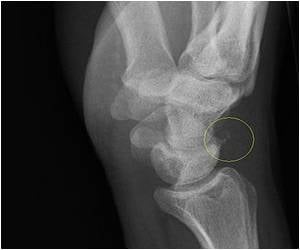Researchers and surgeons of LSU Health Sciences Center New Orleans suggest first preference and early diagnosis of flesh-eating infections.

Many types of bacteria can cause necrotizing fasciitis, including Group A Streptococcus pyogenes and Group B Streptococcus infections. Clostridium and methicillin-resistant Staphylococcus aureus can also cause the infection. In some cases, patients can have more than one type of bacteria. Awareness of predisposing risk factors may also aid a faster diagnosis. These include a history of trauma, obesity, rheumatoid arthritis, diabetes, kidney disease, HIV, hepatitis C, and other diseases that compromise the immune system. However, 50% of necrotizing fasciitis cases occur in healthy people, and can result from cuts, insect bites, or blunt trauma. It has been reported in healthy kids who got hit playing football and suddenly contracted necrotizing fasciitis. "About 45% of patients do not recall obvious injuries, such as cuts, scrapes, injections or bruises that may have led to infections," says Dr. Russo. "If you have a red, warm arm, address it, and do not wait." Dr. Russo is particularly aware of the risk from intravenous drug use. One of his patients developed the devastating infection after injecting the drugs known as bath salts. The bath salts could have been contaminated, or the source could have been the needle.
"Sometimes IV drug users 'grease the needle,' licking the needle prior to injection, which gives you bacteria from your mouth, one of the most bacteria-laden places in the body," notes Dr. Russo.If a necrotizing infection is suspected, surgeons agree that immediate surgical exploration should be performed, with debridement of necrotic tissue and drainage of fluid collections, aggressive resuscitation, and broad spectrum antibiotics given. Wound vacuums, negative pressure wound therapy systems or hyperbaric oxygen may also help. The researchers recommend more education, both for the medical community and the public, as well as further research to boost immune response and better manage disease.Dr. Russo also suggests the development of a combination of tests to rapidly differentiate between cellulitis and necrotizing fasciitis, and until then, an immediate ultrasound upon patient admission.
"I think if these patients are getting ultrasounds when they hit the door as one of the first tests, you can tell if there is a lot of fluid, pus or gas underneath the skin quickly and rule out cellulitis vs. necrotizing fasciitis relatively quickly without needing a CT, an MRI or a bunch of labs," he said. "With this disease, time is serious."
Source-Eurekalert










